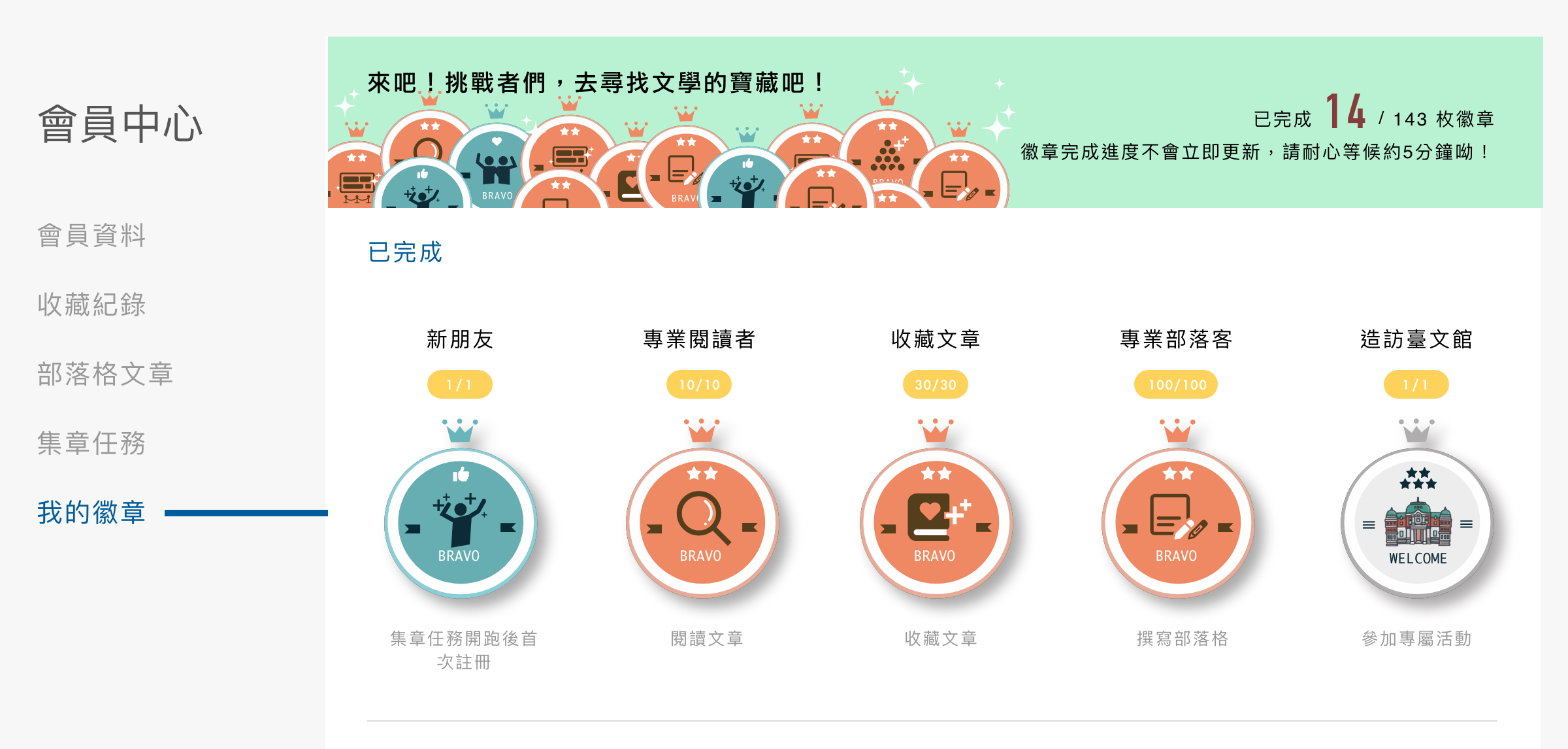Chiu Jia-hong|Huang Juan|Shi Shu-qing|Chen Yao-chang|Chung Wen-yin|Q&A
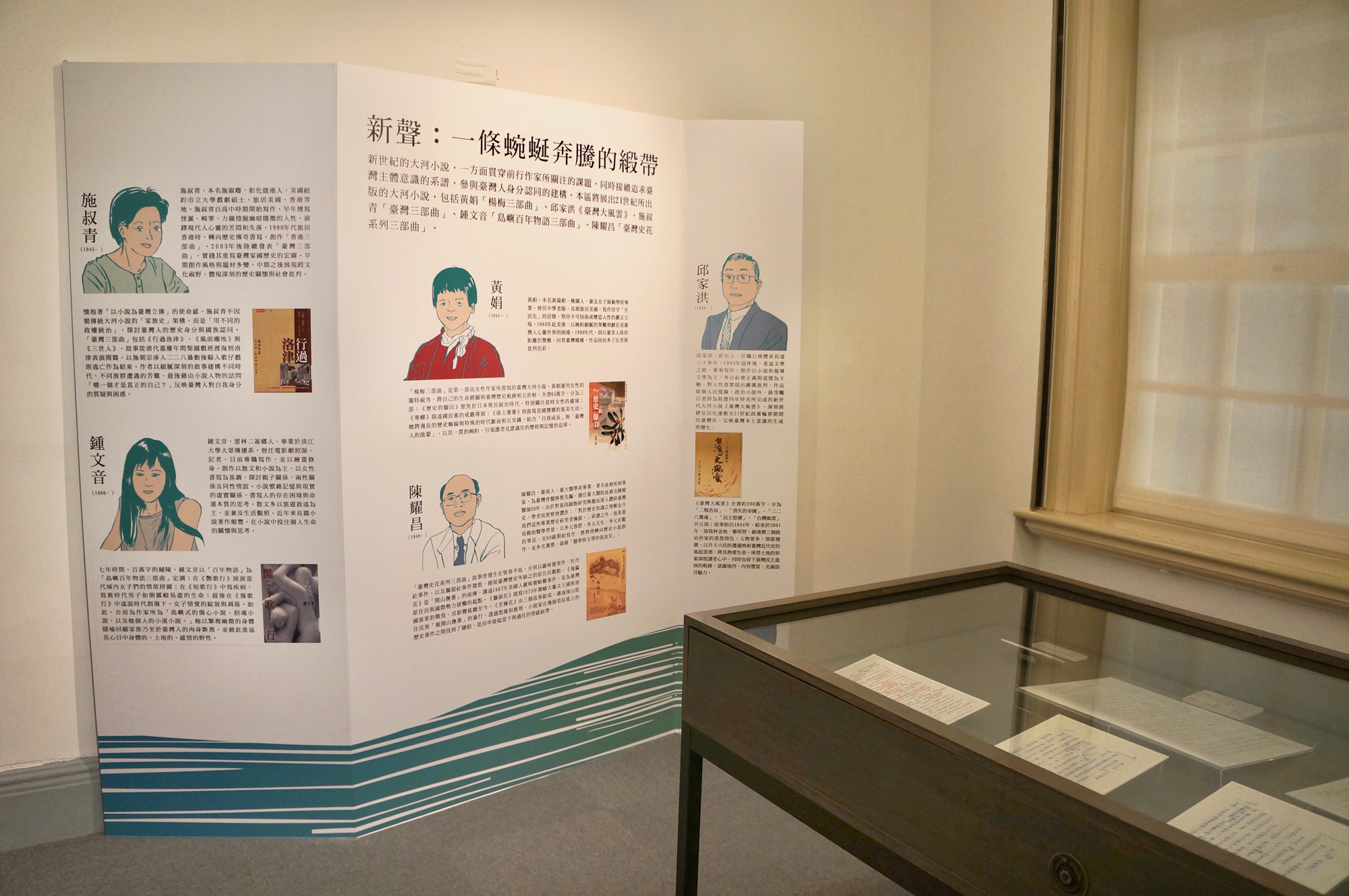
The new-generation romans-fleuves highlight issues addressed by previous writers as well as explore the "Taiwanese" identity. These books were part of the process of constructing Taiwan's new post-colonial, post-martial-law identity. This section introduces romans-fleuves published in the 21st century, including Huang Juan's "Yangmei Trilogy", Chiu Jia-hong's THE BIG CHANGE IN TAIWAN, Shi Shu-qing's "Taiwan Trilogy", Zhong Wen-yin's "Island's 100-Year Story: Trilogy", and Chen Yao-chang's "Trilogy of the Flower Series: History of Taiwan".
Chiu Jia-hong(1933- )

A native of Changhua. After committing to the public service for more than 30 years, Chiu retired in 1993 and veered towards the literary path. His literary works are mainly novels and non-fiction novels. The subject matter in his writing is often about social justice and morality, with heavy criticism of human greed. In addition to Chiu's personal memoirs and political novels, THE BIG CHANGE IN TAIWAN, a new generation Roman-Fleuve, which took him 4 years to complete, is his most highly recognized work. It profoundly depicts the period of Taiwanese history from the Kominka (Japanization) movement to the transition of power between political parties in the 21st century, which reflects the cultivation and development of Taiwanese localization.
📚 THE BIG CHANGE IN TAIWAN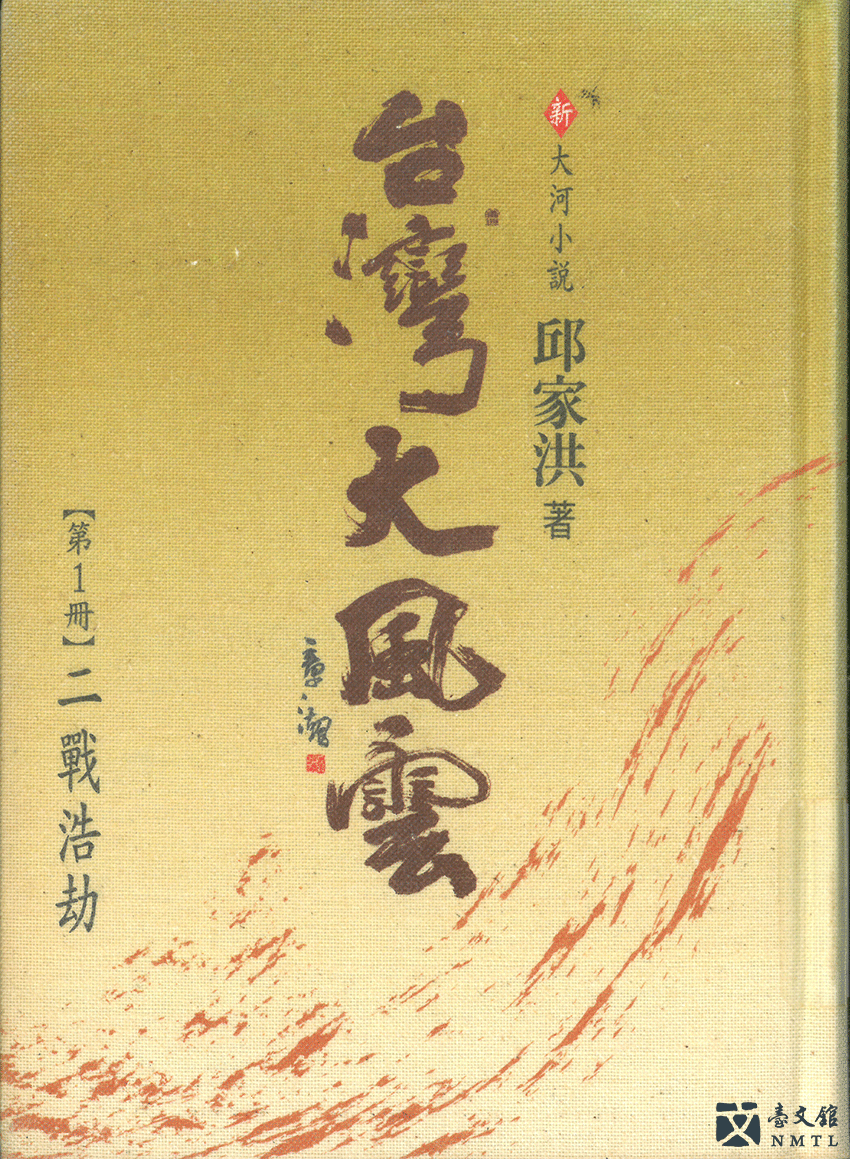
THE BIG CHANGE IN TAIWAN has a total of 2 million words, and is divided into 5 parts: WWII, DISAPPEARING EMPIRE, TERROR OF 228, WAVES OF DEMOCRATIZATION and DRASTIC CHANGES. The story covers the time from 1944 to 2001, describing the complex entanglements of 3 political families represented by Lin Chin-ti, Cheng Ming-chih and Su Han-piao. The story consists of numerous characters with a complicated plot. Descriptions of the daily experiences of the common people alluded to the turbulence in the modern history of Taiwan. The people's love of life and the land of Taiwan is deeply entrenched in the readers' hearts, and at the same time leaving a mark for the progressive development of Taiwanese democracy. This is a story of strong intent, with substance and linguistic charm.
Taiwan and Tangshan still differ from each other, and Taiwanese culture is not equivalent to the culture of Tangshan. So, he attaches particular importance and value to Taiwanese customs, be it celebrative or mournful occasions, or even in worshipping the gods and ancestors; he follows the traditional Taiwanese rituals and customs, being quite persistent and uncompromising.
──Chiu Jia-hong, WWII, THE BIG CHANGE IN TAIWAN
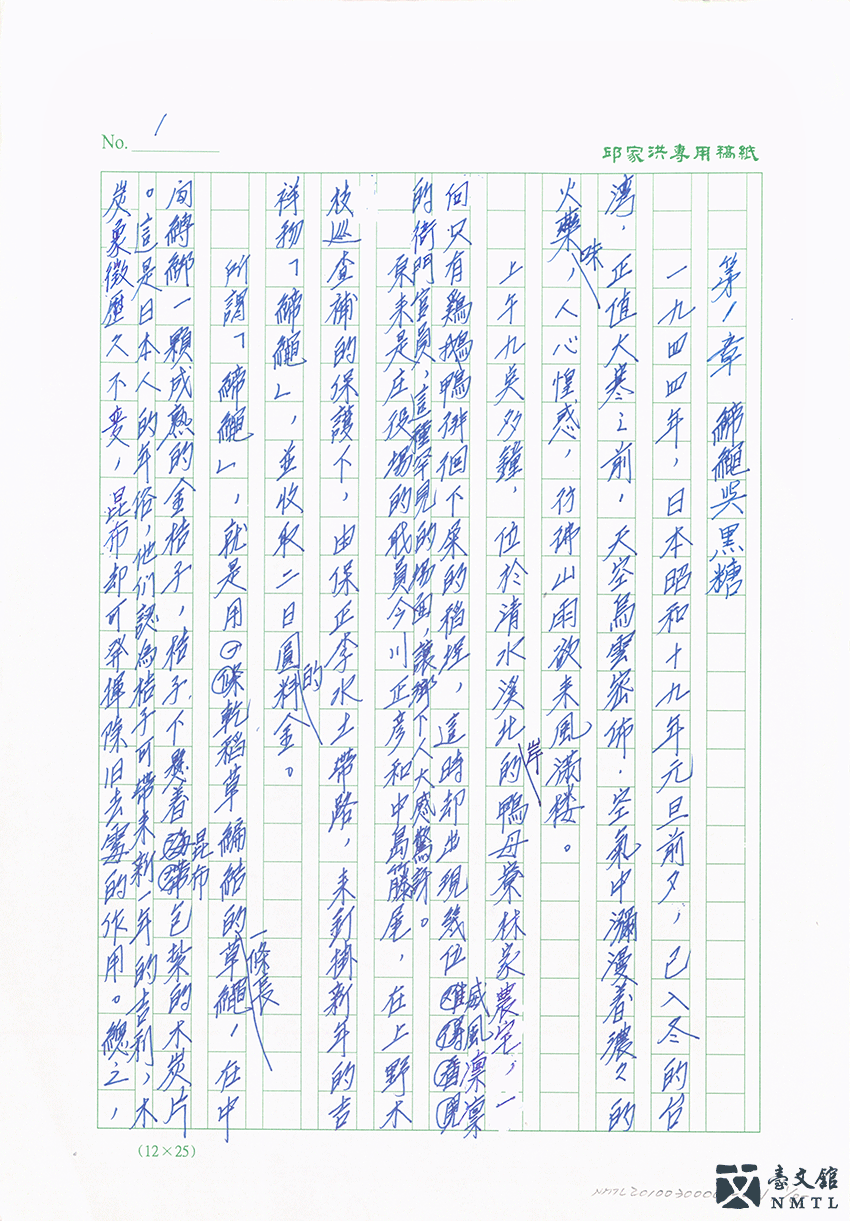
🌊 The manuscript of Chiu Jia-hong's "First Book of THE BIG CHANGE IN TAIWAN: WWII"|THE BIG CHANGE IN TAIWAN is comprised of five books with all the chapters connected in order. The manuscript contains 55 chapters and 4,865 pages: The first book WWII starts from Chapter 1 "Thread and Brown Sugar" and ends with Chapter 15 "Conflict"; the second book LOST EMPIRE (renamed to DISAPPEARING EMPIRE when published) starts from Chapter 16 "Funeral and Wedding" and ends with Chapter 26 "Kamikaze"; the third book THE 228 TERROR starts from Chapter 27 "Change of Regime" and ends with Chapter 35 "Era of Horror"; the fourth book WAVES OF DEMOCRATIZATION starts from Chapter 36 "Goodbye Motherland" and ends with Chapter 43 "Rogue Tiger"; and the fifth book DRASTIC CHANGES starts from Chapter 44 "World of Sentiments" and ends with Chapter 55 "Stage". (Donated by Chiu Jia-hong / From the National Museum of Taiwan Literature permanent collection)
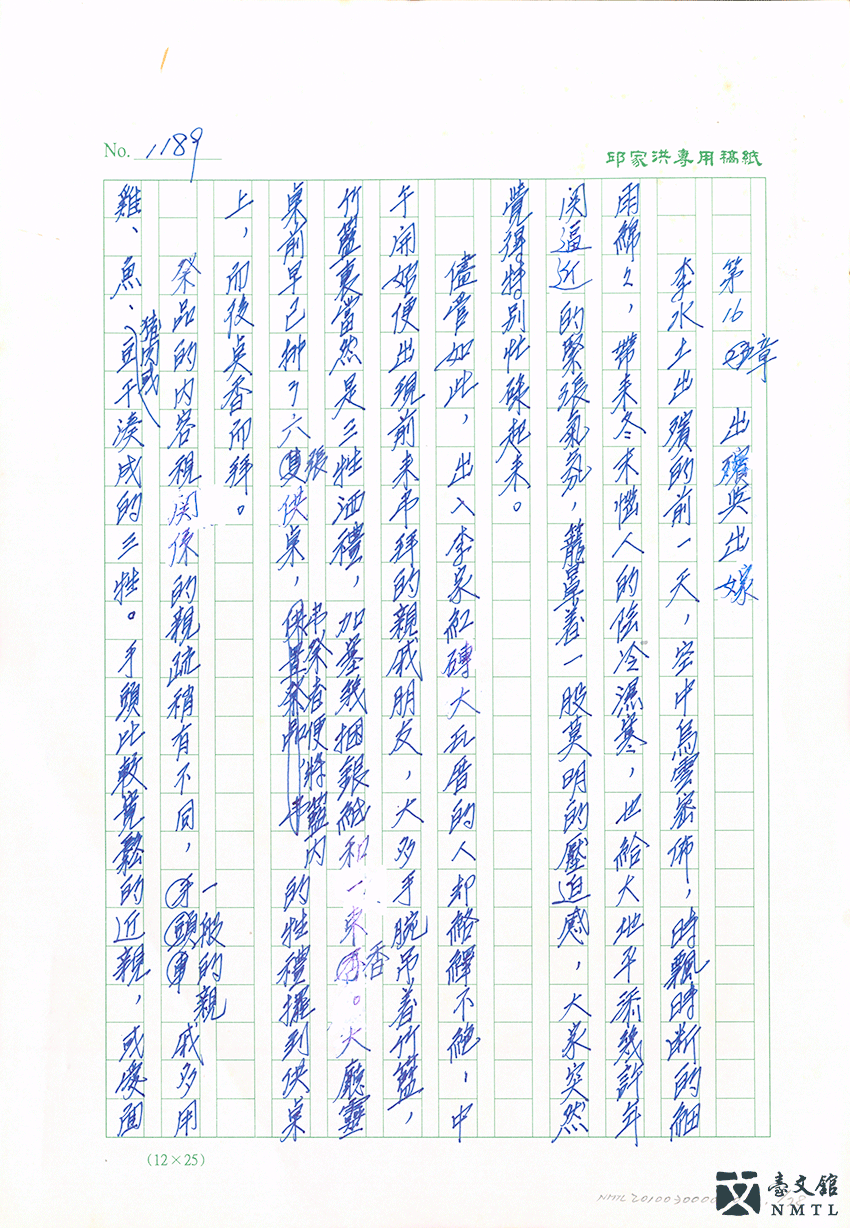
🌊 Chiu Chia-hung, THE BIG CHANGE IN TAIWAN, Volume 2, "Disappearing Empire," manuscript|(Donated by Chiu Jia-hong / From the National Museum of Taiwan Literature permanent collection)
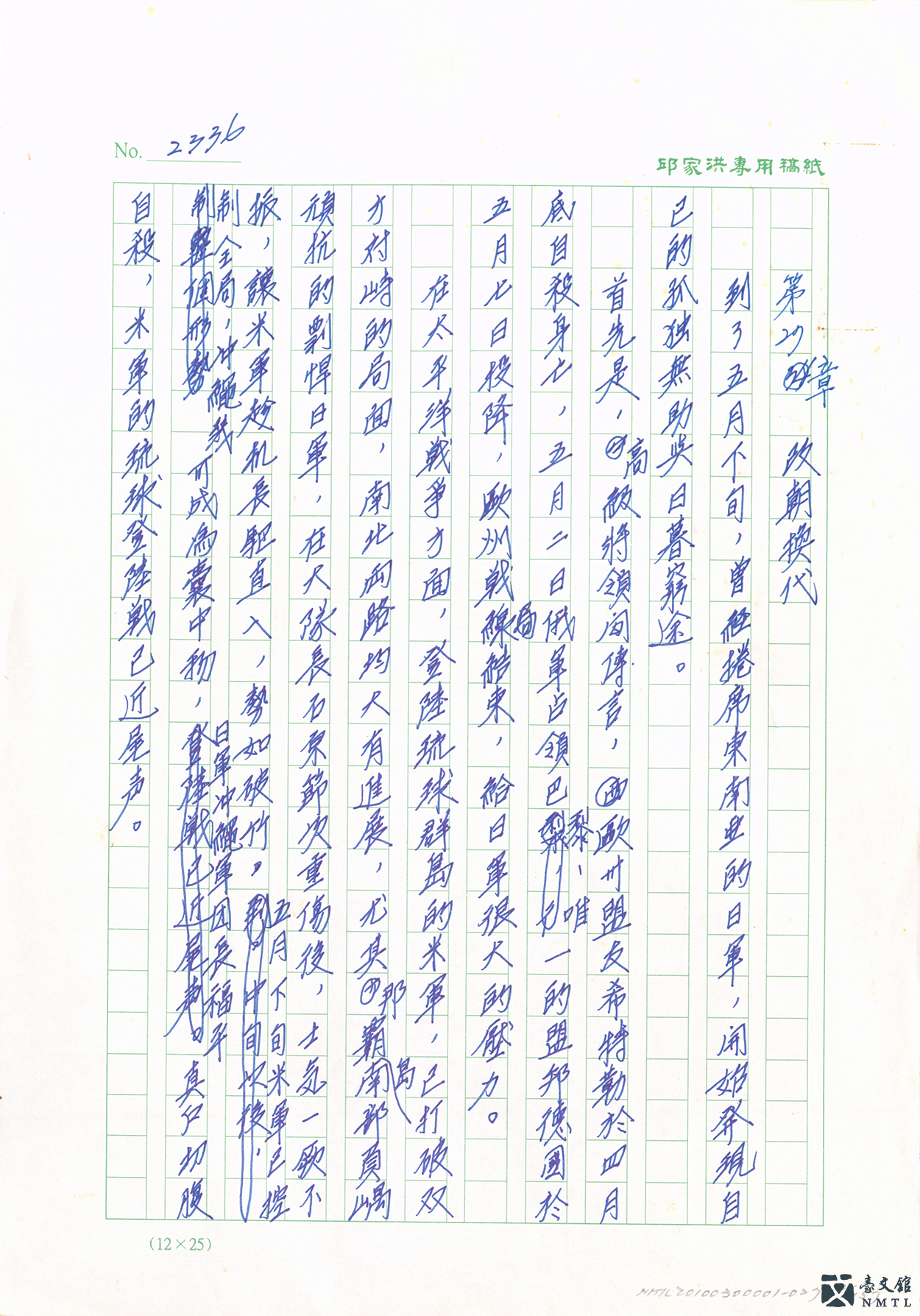
🌊 Chiu Chia-hung, THE BIG CHANGE IN TAIWAN, Volume 3, "228 Terror," manuscript|(Donated by Chiu Jia-hong / From the National Museum of Taiwan Literature permanent collection)
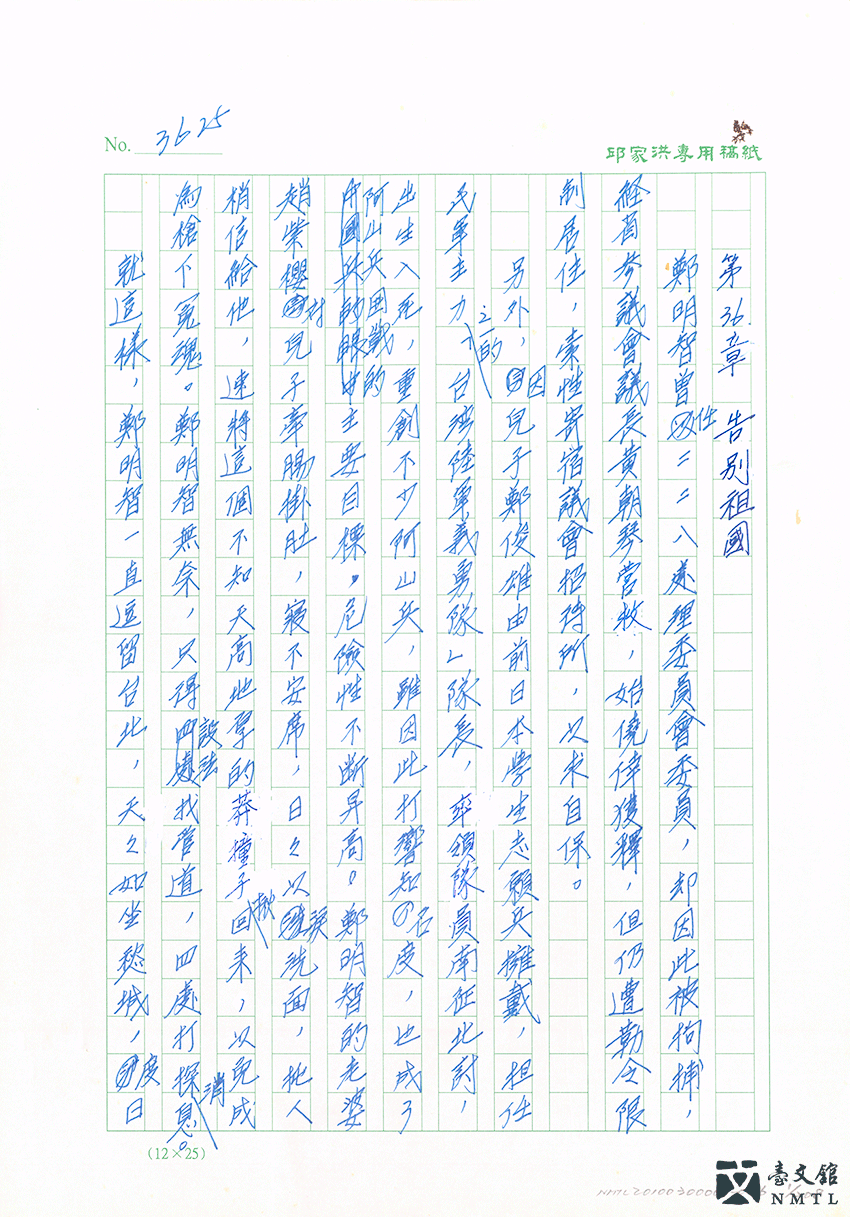
🌊 Chiu Chia-hung, THE BIG CHANGE IN TAIWAN, Volume 4, "Waves Of Democratization," manuscript|(Donated by Chiu Jia-hong / From the National Museum of Taiwan Literature permanent collection)
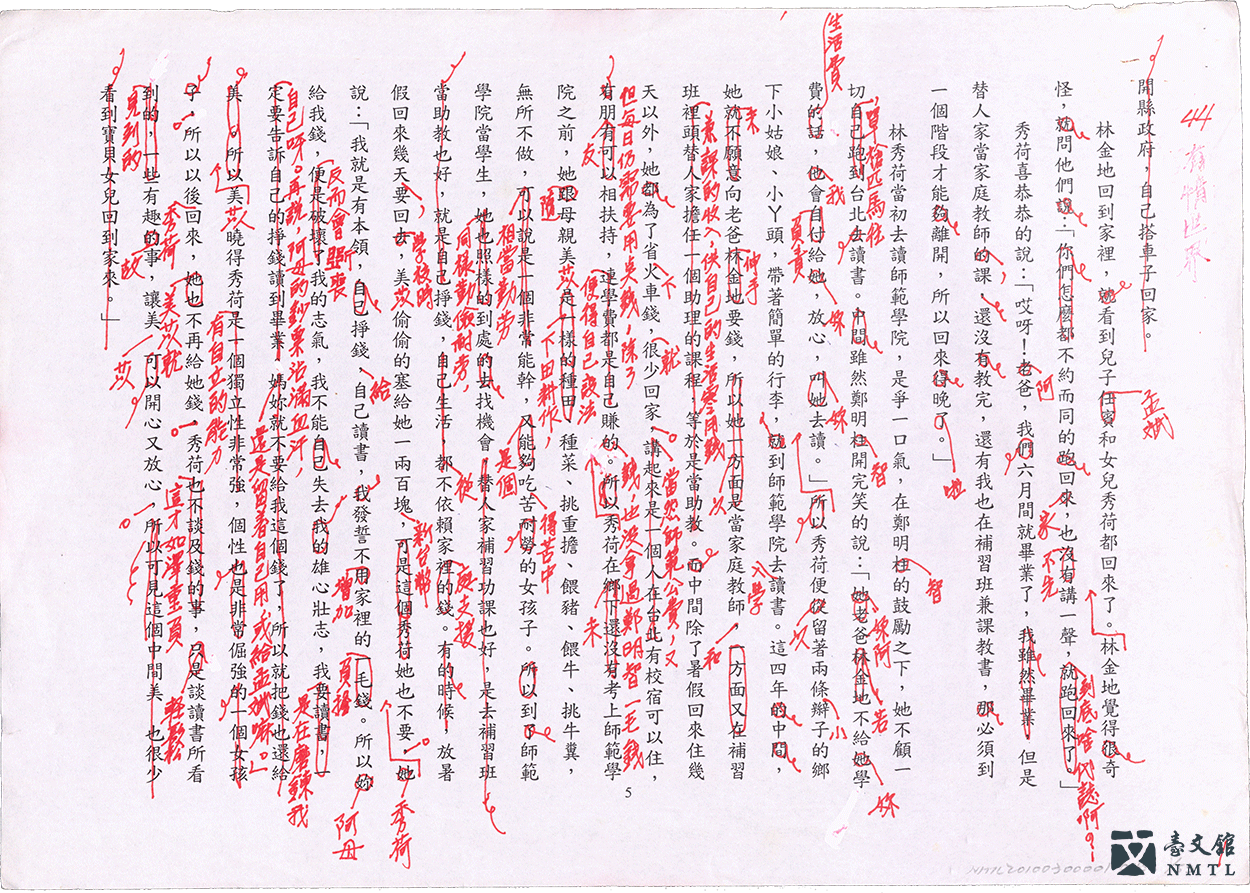
🌊 Chiu Chia-hung, THE BIG CHANGE IN TAIWAN, Volume 5, "Drastic Changes," manuscript|(Donated by Chiu Jia-hong / From the National Museum of Taiwan Literature permanent collection)
Huang Juan (1934- )
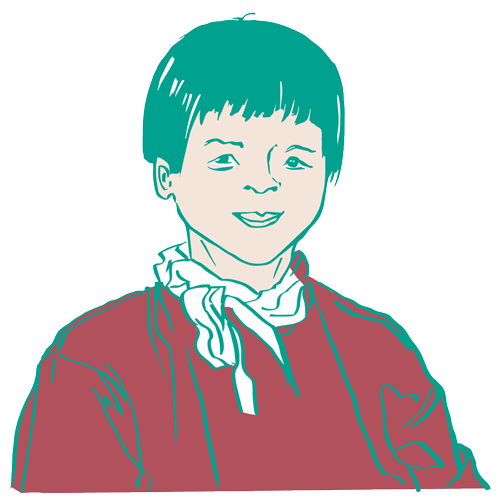
Born Huang Jui-chuan. A native of Taoyuan. Huang graduated from Taipei Women's Normal School of Education, and served as a high school teacher. She had also stayed in the United States for an extensive period of time. She is committed to rendering "life as it is" in her works, and insists that one should not distort or alter human nature. After she went to the United States in 1968, she adopted a graceful and delicate writing style in portraying the spiritual perplexity of Taiwanese living in the States. In the 1990s, Huang shifted towards the mindset of Taiwanese Americans looking at Taiwan from a critical distance. As such, her works in this period had a more introspective and critical tint.
📚 YANGMEI TRILOGY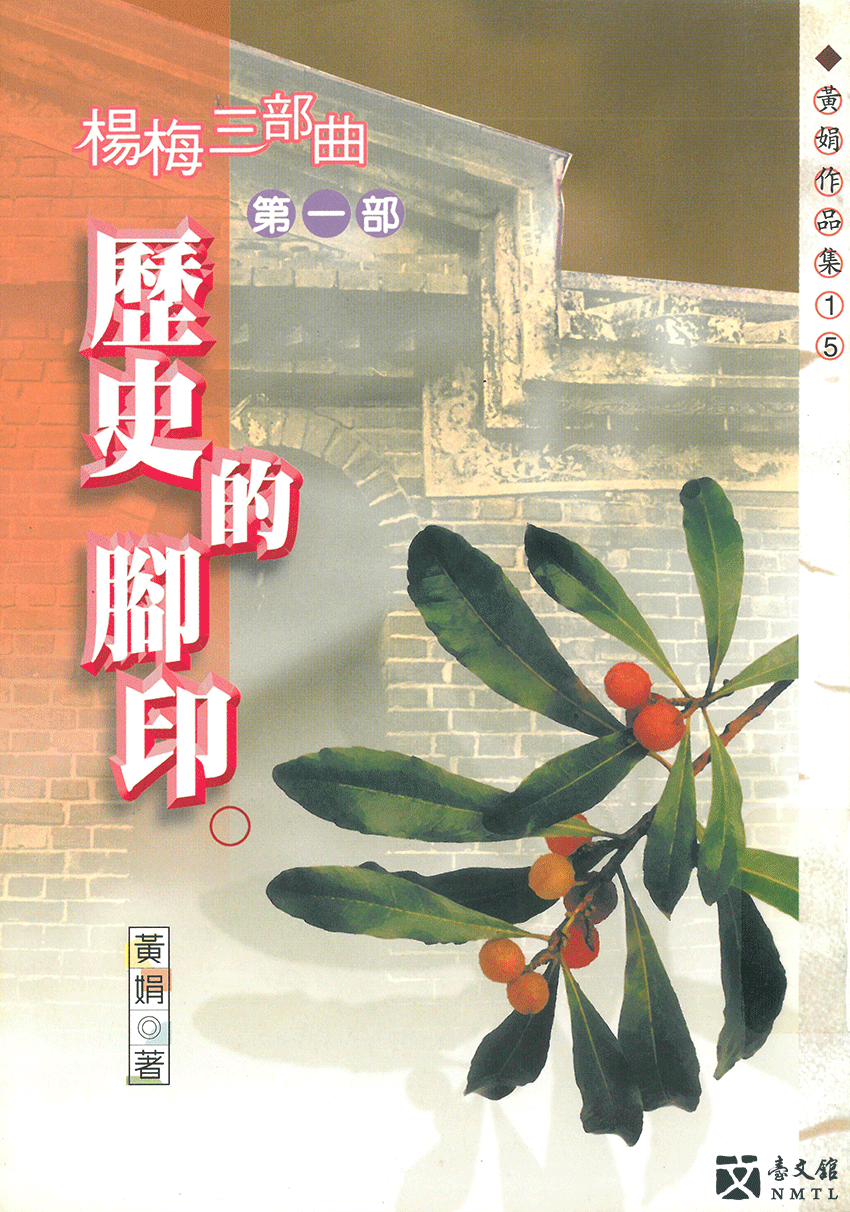
YANGMEI TRILOGY is the first Taiwanese Roman-Fleuve written by a female author. Huang Juan's own life experiences interact with the trajectory of Taiwan's history through a woman's unique perspective. The 650-thousand-word story is divided into 3 parts: FOOTPRINTS FROM HISTORY focuses on the period of Japanese colonial rule with particular attention paid to the situation of women at the time; WINTER CICADA is about the martial law dictatorship; FORMOSAN LANDED describes the nostalgic sentiments during life abroad in the United States. Huang weaved the historical axis and the particular time fragments together, incorporated with "self-growth" and "enlightenment of Taiwanese", leading readers gracefully on a walk down memory lane in search of the past and revisiting memories.
Hsing-tsu does not like it at all to be called "slave of the Qing dynasty" or "China soldier." She does not know what that means, let alone why the Japanese children call her that way.
──Huang Juan, FOOTPRINTS FROM HISTORY, YANGMEI TRILOGY
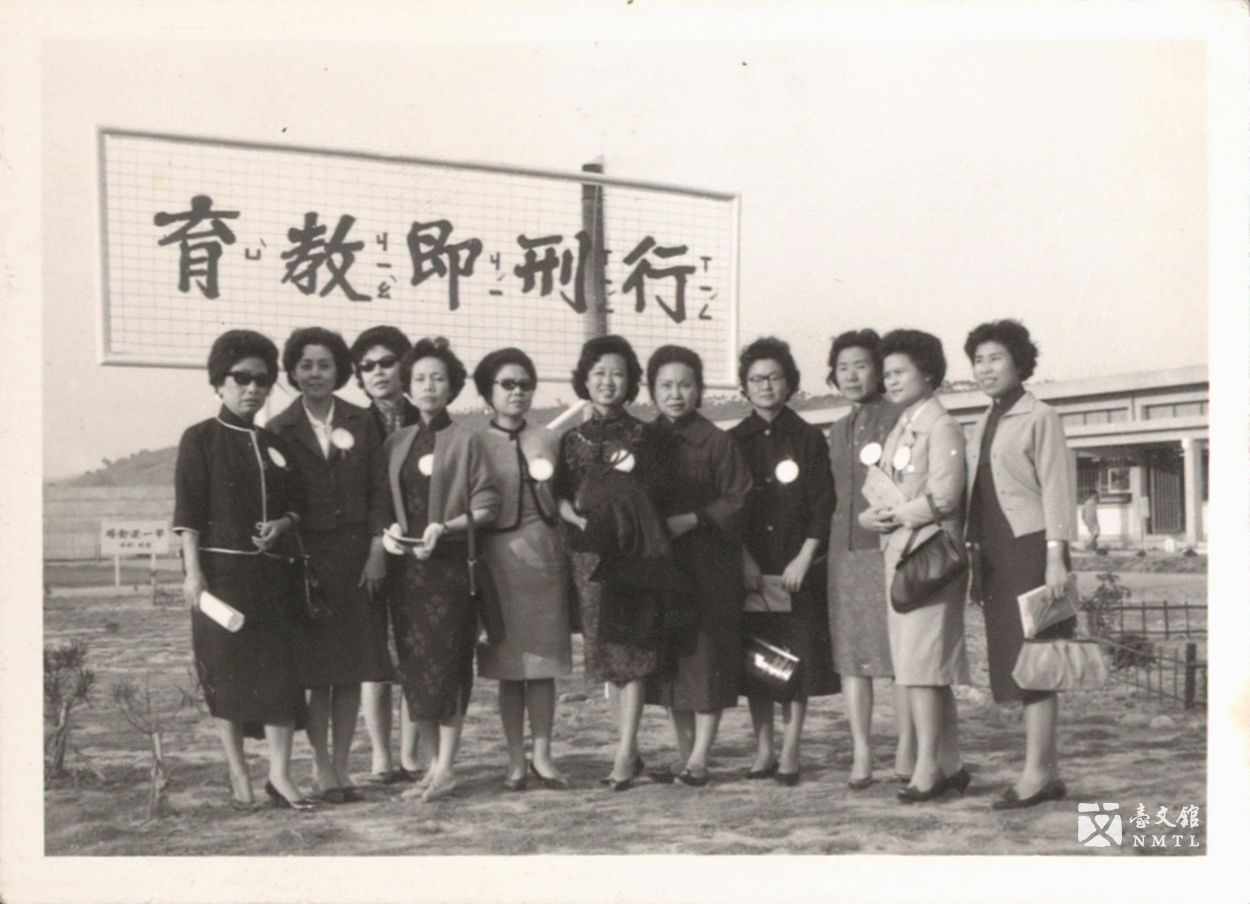
🌊 Huang Juan, writer Chi Chun and other members of the Women's Association in a group photo|Time of the photo taken was unknown.
Photo: Huang Juan (2nd from right), Chi Chun (1st from right). (Donated by the family of Chi Chun / From the National Museum of Taiwan Literature permanent collection)
Shi Shu-qing (1945- )

Born Shih Shu-ching. A native of Lukang, Changhua. Shi obtained a Master's degree in Drama and Theatre from the City University of New York. She has lived in the United States, Hong Kong, and others. Shi began writing when she was studying at the high school. In the early years, she was good at writing about the grotesque and bizarre, and was keen to expose the dark and hidden side of human nature, revealing the boredom and sense of loss among modern people. In the 1990s, when she was residing in Hong Kong, she turned to writing historical legends, and produced the HONG KONG TRILOGY. After 2003, she released the TAIWAN TRILOGY consecutively, realizing her ambition to rewrite Taiwanese history. She was dexterous in different styles and themes in the early years. In the latter years she exhibited a cross-cultural perspective, and demonstrated her insightful concerns for history as well as criticism of society.
📚 TAIWAN TRILOGY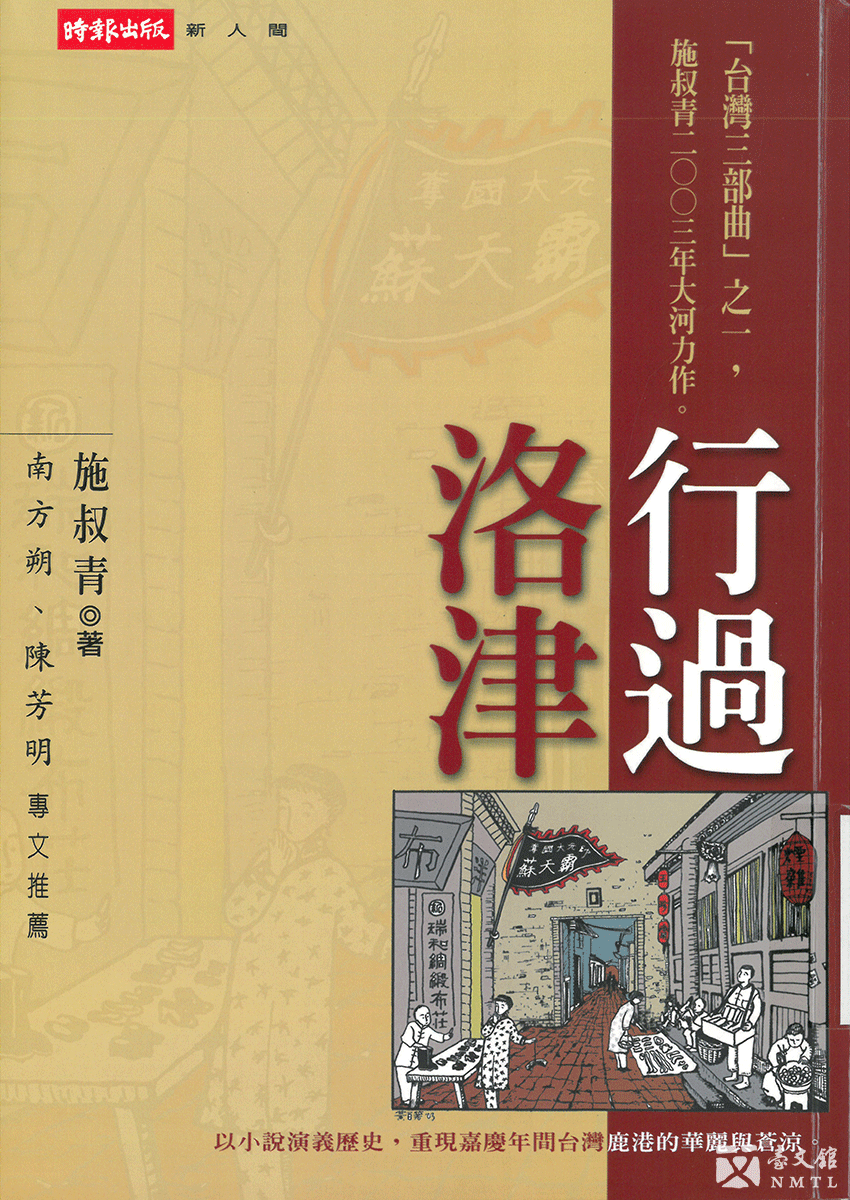
Bearing a sense of mission to "use novels as Taiwan's biography", Shi Shu-qing took a structure different from the typical "family history" framework in most Romans-Fleuves, and adopted the "ruling by different political powers" to explore the historical and national identity of Taiwanese. TAIWAN TRILOGY includes WALKING THROUGH LO-CHIN, DUST IN THE WIND and MEN OF THREE GENERATIONS. The story began in the Jiaqing era of the Qing dynasty, when the Liyuan Ensemble crossed the sea to deliver their performance in Luojin (today's Lukang), and ended with Shih Chao-tsung becoming a fugitive and hiding among the Ensemble after being involved in the 228 Incident. The author adopted a delicate and philosophical approach to recount the suffering of the people in different times and from different ethnic groups. Coming to the end, the author exposed the doubts and confusions of Taiwanese over their self-identity when the characters in the story probe into the question "Which is the real me?"
He was switching among several different identities.
"Is that person me?"
"That person can't be me!"
──Shi Shu-qing, MEN OF THREE GENERATIONS, TAIWAN TRILOGY
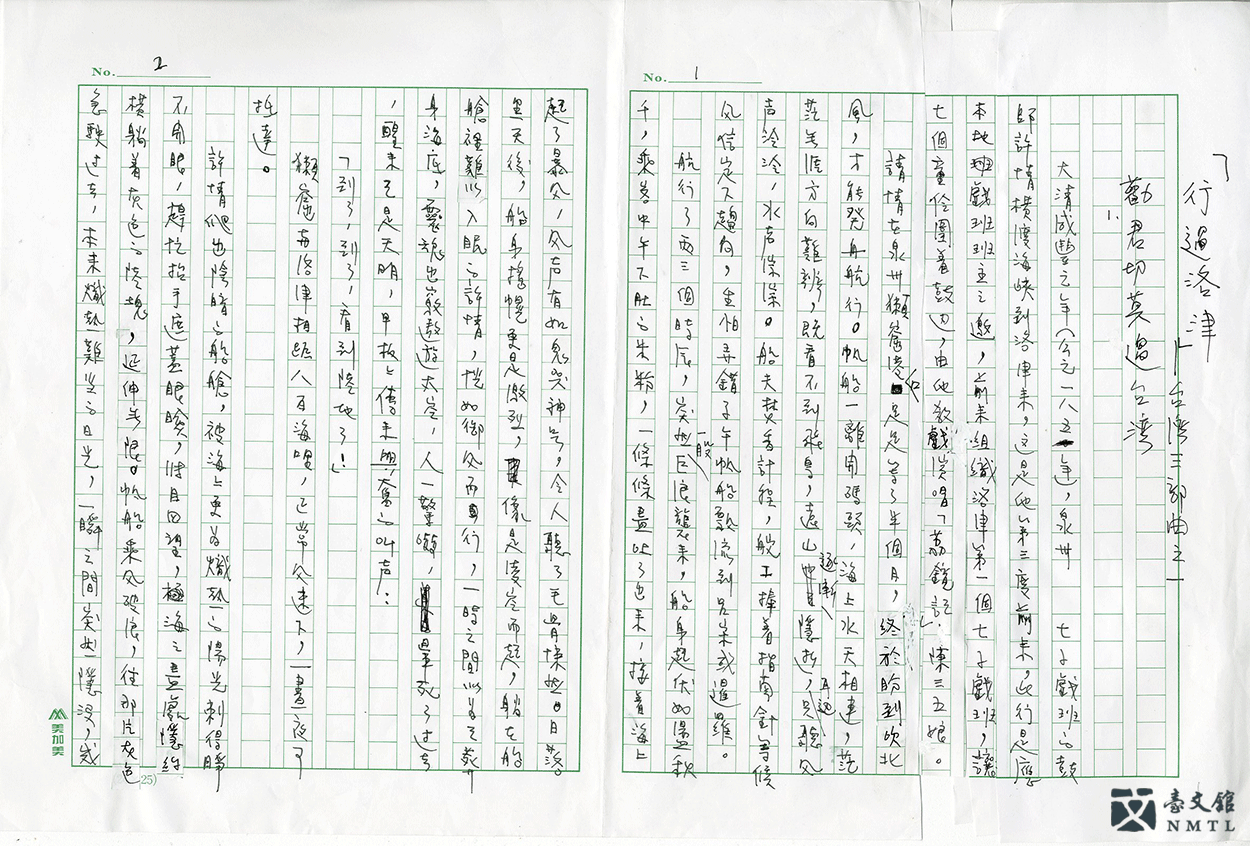
🌊 The manuscript of Shi Shu-qing's "Walking Through Lo-Chin—A Part of Taiwan Trilogy"|WALKING THROUGH LO-CHIN is the first book of TAIWAN TRILOGY. The author began writing the story outline in 2000. The story is set in her hometown Lugang (formerly known as Lo-Chin). Through the life of Hsu Chin, a male actor who specialized in playing female roles in the Quanzhou Theatre Troupe, the story illustrates the decline of the once prosperous town of Lo-Chin during the mid to late Qing Dynasty (1644-1911), providing readers with vivid vignettes of contemporary history in Taiwan, China, and the world. (Donated by Shi Shu-qing / From the National Museum of Taiwan Literature permanent collection)
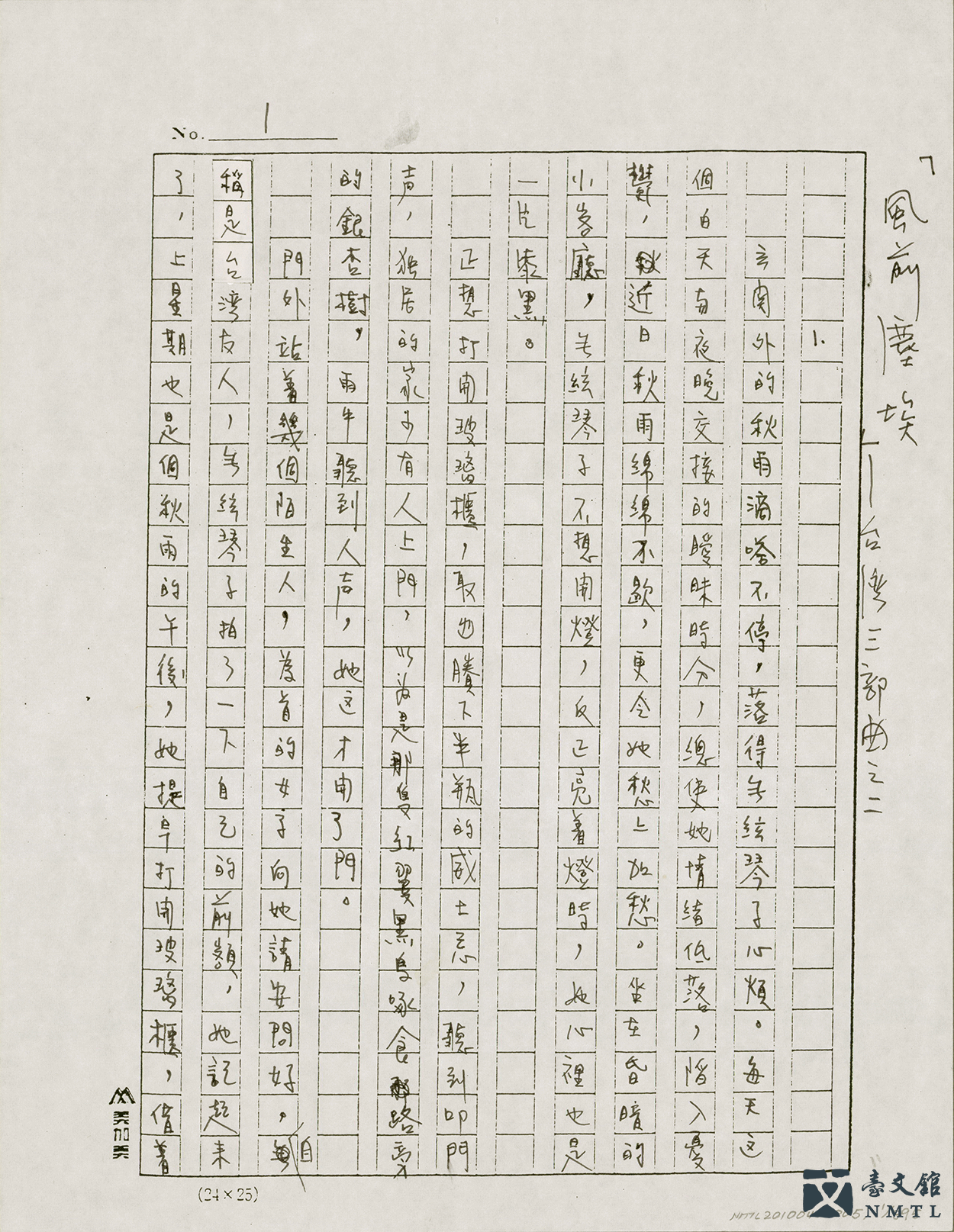
🌊 Shi Shu-qing, The Dust Before the Wind, TAIWAN TRILOGY, Part 2, manuscript|"The Dust Before the Wind" is Part 2 of TAIWAN TRILOGY, which is a narrative from women's perspective about the Hualien area during the Japanese rule. The Japanese, aborigines and Hakka people engaged in cross-racial relationships and marriages, which revealed a culture shock arising from Japanese colonization. Identity issues also sprang from the colonization. The historical memory from the period of Japanese rule is brought out through the stories of 3 women, Ayako Kashiyama, Tsukihime Kashiyama, and Kotoko Mugen, from different generations. The story also serves to present the different ways of life in various ethnic groups of Taiwan. (Donated by Shi Shu-qing / From the National Museum of Taiwan Literature permanent collection)
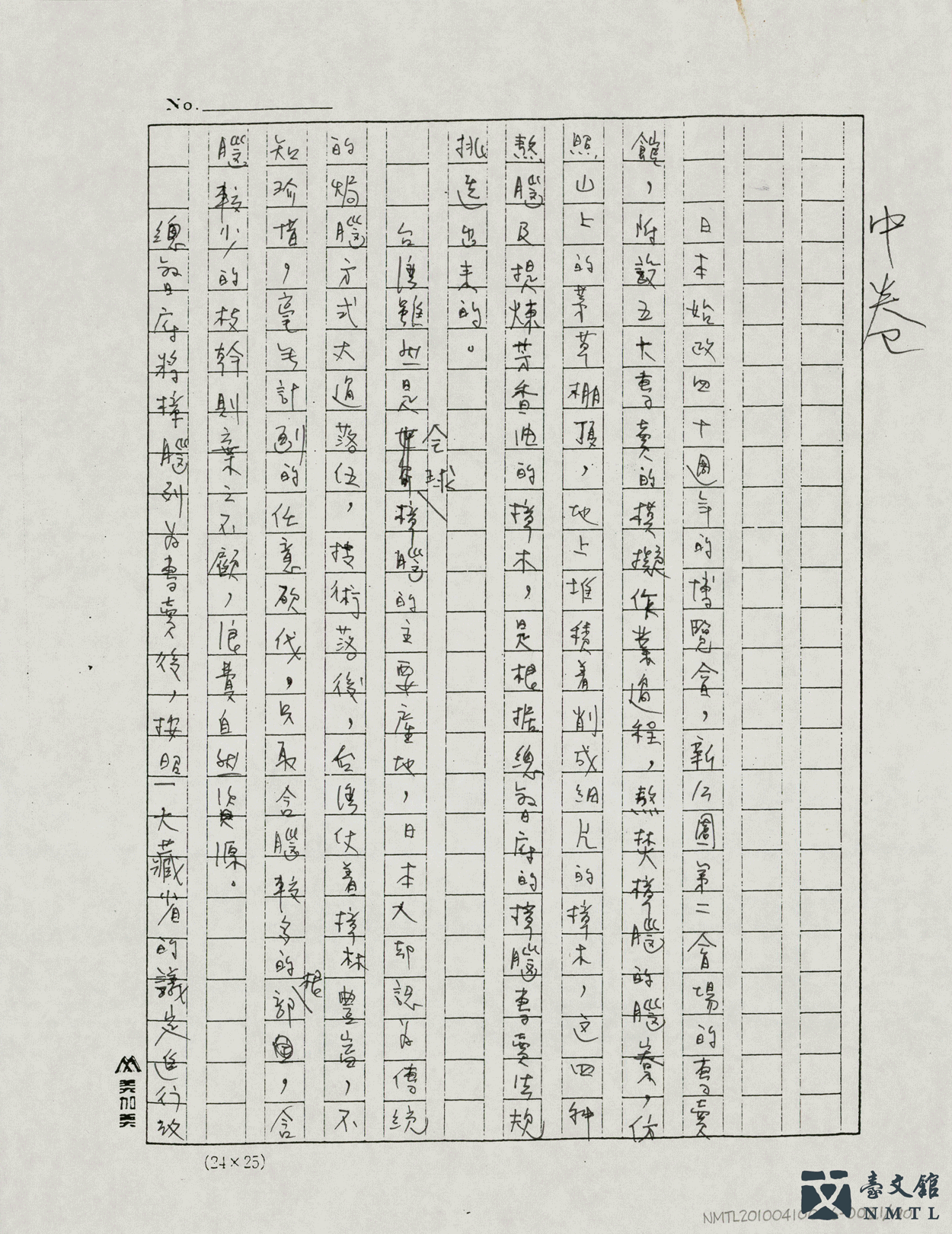
🌊 Shi Shu-qing, The Three Generations, TAIWAN TRILOGY, Part 3, manuscript|"The Three Generations" is Part 3 of TAIWAN TRILOGY. The story began from the end of the Qing dynasty, through the Japanese rule, running up to the 228 Incident. There were 3 seemingly unrelated main story lines: The 3 generations of the Shi family in Lukang; Wang Chang-chu, who was sold by her father, together with intellectuals Huang Tsan-yun and Juan Chang-I, illustrating the development of Taiwan society and history through their fragmentary experiences in life, ultimately pointing out the confusion and helplessness of Taiwanese in their self-identification. (Donated by Shi Shu-qing / From the National Museum of Taiwan Literature permanent collection)
Chen Yao-chang(1949- )

A native of Tainan, Chen graduated from the School of Medicine, National Taiwan University, and was a well-known hematological expert, and a pioneer in bone marrow transplantation for Taiwan. Chen also served as Physician in the Division of Hematology-Oncology for the National Taiwan University Hospital for 30 years. Due to his interest in genetic research, he has also delved into the study of Taiwan history. Scholar Wu Mi-cha once commended Chen, "His knowledge and understanding of history is well-respected even by history research professionals like me." Besides his poring over research, Chen also drew on his medical background, coupled with his multi-ethnic, cultural and historical contexts. He began writing at the age of 60. Making a shift of passion to historical novel writing, he has received numerous accolades, and is considered a "medical and literary hybrid talent."
📚 TRILOGY OF THE FLOWER SERIES: HISTORY OF TAIWAN 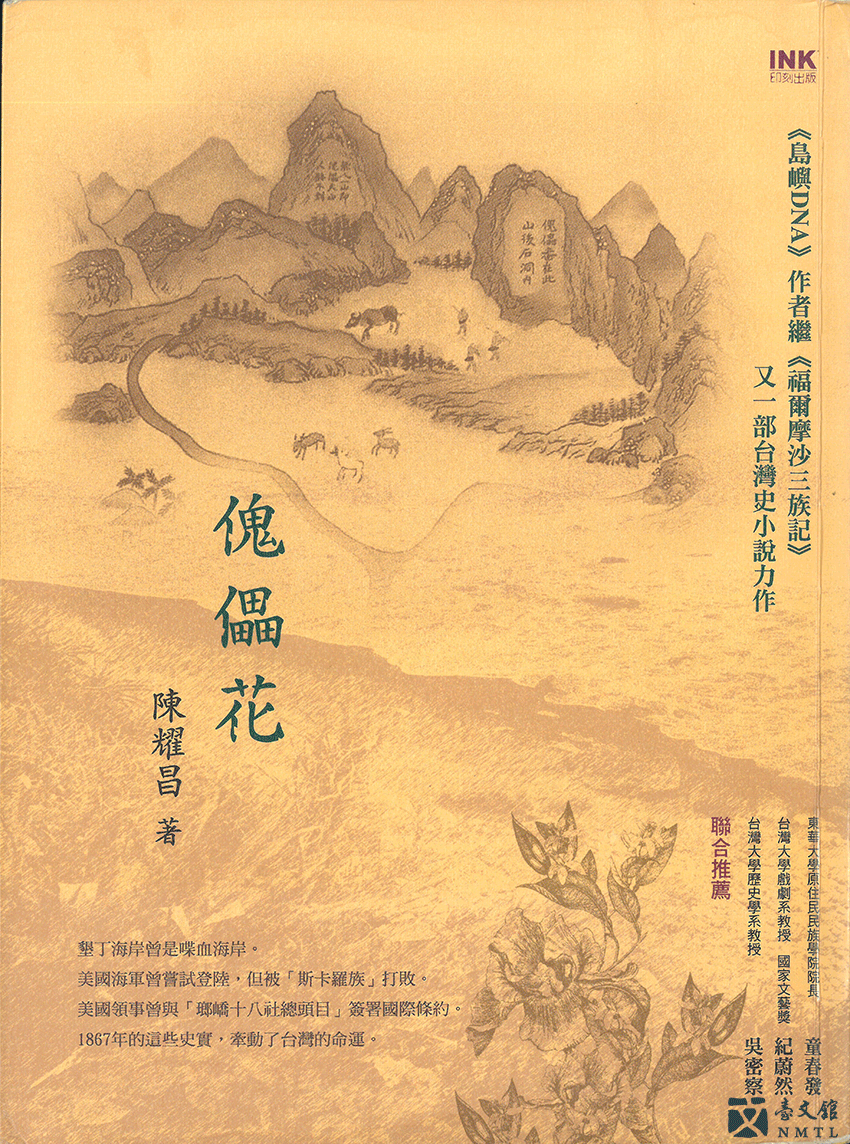
The story of the TRILOGY OF THE FLOWER SERIES: HISTORY OF TAIWAN occurred in the Hengchun Peninsula, with the Rover Incident, Mudan Incident and the Shi-Tou Clan Event as the basis forming the indigenous inhabitants' perspective that was missing in the history of Taiwan. PUPPET FLOWER is the prequel to "the development of the mountain areas and pacification of the aborigines." It tells of the Rover Incident in 1867 which involved Americans in a shipwreck, thereby marking the beginning of international interaction for Taiwan aborigines. LADY THE LIONHEAD depicts the battle between Lonc-kjauw/Tjakuvukuvulj and the Huai Army of the Qing dynasty, whose influence is still felt to this day. NEEM FLOWER is made up of 3 stories, which deal with the brutality that was cast onto the indigenous people in the high lands in the course of the "development of mountain areas and pacification of the aborigines." Through imagination and logical reasoning, the novelist found a connection among seemingly unrelated historical incidents, at once bridging the sentiments from the past to the present.
This place looks across to the coastline of Alangyi; with the ancestral land of Katatipul on the opposite side, the tribe can feel the aura of their ancestors' spirits, and so they settled down and continued with the Seqalu traditions.
──Chen Yao-chang, PUPPET FLOWER, TRILOGY OF THE FLOWER SERIES: HISTORY OF TAIWAN
Chung Wen-yin(1966- )

A native of Erlun Township, Yunlin. Chung graduated from the Department of Mass Communication, Tamkang University. She used to be a film still photographer, and a reporter. Currently, she is writing professionally, and is cultivating herself through painting. Chung's literary works are mainly in the form of prose and novels, and writes in a female keynote. She also explores the parent-child relationship, gender relationships and same gender friendship. Through the volatile connection between memory and reality, Chung leads us to think about the nature of human existence amidst dilemma and destiny. Her prose is mostly travel narrative with observations about life. In recent years, she has proliferated long novels, and inserts her own concern and thinking about life into the stories.
📚 ISLAND'S 100-YEAR STORY: TRILOGY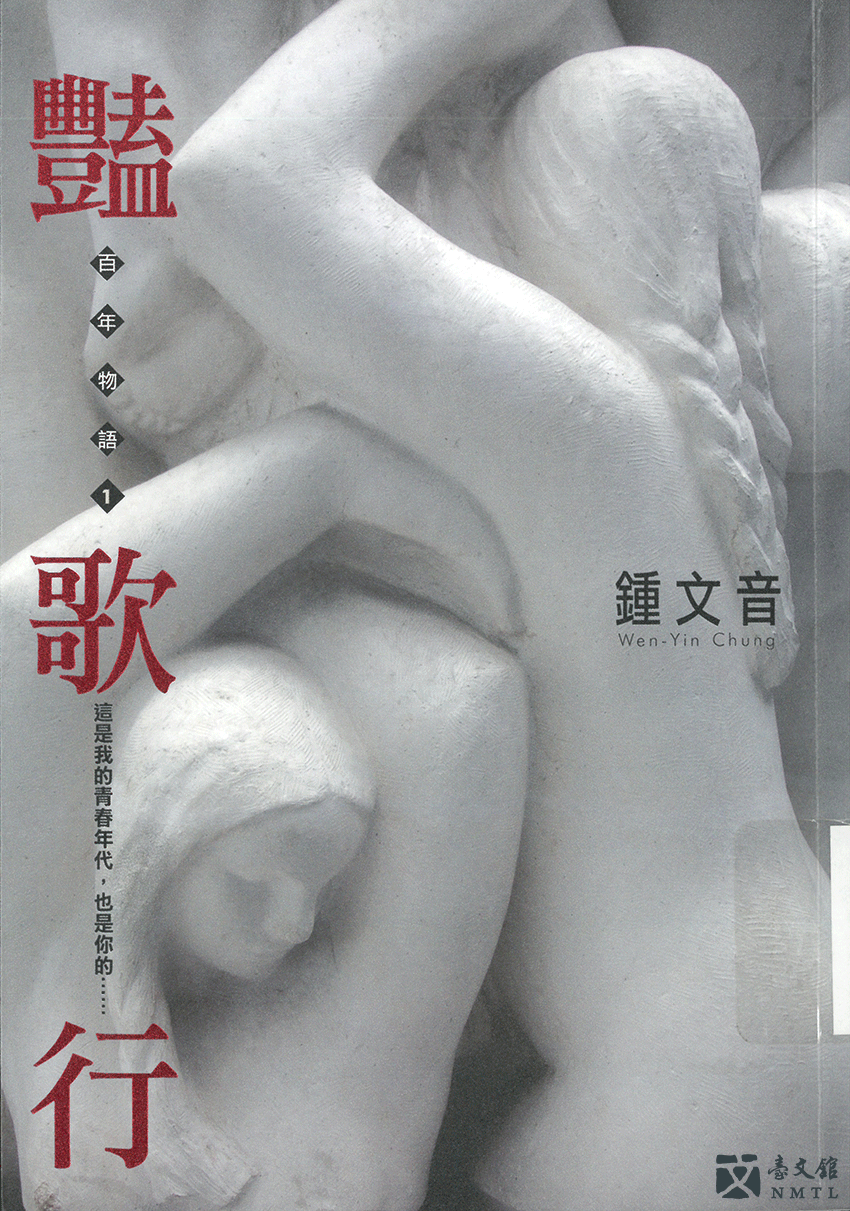
It took Chung Wen-yin 7 years to roll out 1 million words, wherein she used 100-YEAR'S STORY as the keynote to ISLAND TRILOGY: in DECAYED LUST, she illustrated the construction of eroticism among women in the contemporary city; in DECAYED HISTORY, she wrote about disease and the brevity of man's life in the olden days; lastly, in DECAYED LAND, she told of the ebb and flow of women's love in face of a traumatized generation. In this way, the author fused the island-style tragic novel, ghost-conjuring novel, and her own shortened Roman-Fleuve into one piece of work. She used complex and subtle metaphors from the human body to recall the brutal damage inflicted on family clans and furthermore on the Taiwan people, with a hope to draw our attention back to our bodies, our land, and our primitive emotions.
What you describe in writing is related to yourself, which is also your center point. Whatever extends beyond your core that you can describe and record is solely dependent on your haphazard memory.
──Chung Wen-yin, DECAYED LUST, ISLAND'S 100-YEAR STORY: TRILOGY
Q&A
Q:Which is the first Roman-Fleuve written by a female author? Who is the author?
A:YANGMEI TRILOGY, by Huang Juan.
FOOTPRINTS FROM HISTORY, the first part of YANGMEI TRILOGY by Huang Juan, was published in 2001. Huang was the first female author in Romans-Fleuves who wrote based on the historical trajectory of Taiwan. The female authors of Romans-Fleuves thereafter, such as Shi Shu-qing (TAIWAN TRILOGY), and Chung Wen-yin (ISLAND'S 100-YEAR STORY: TRILOGY), all inherited this Taiwanese historical perspective from the female viewpoint, giving continued attention to this land.
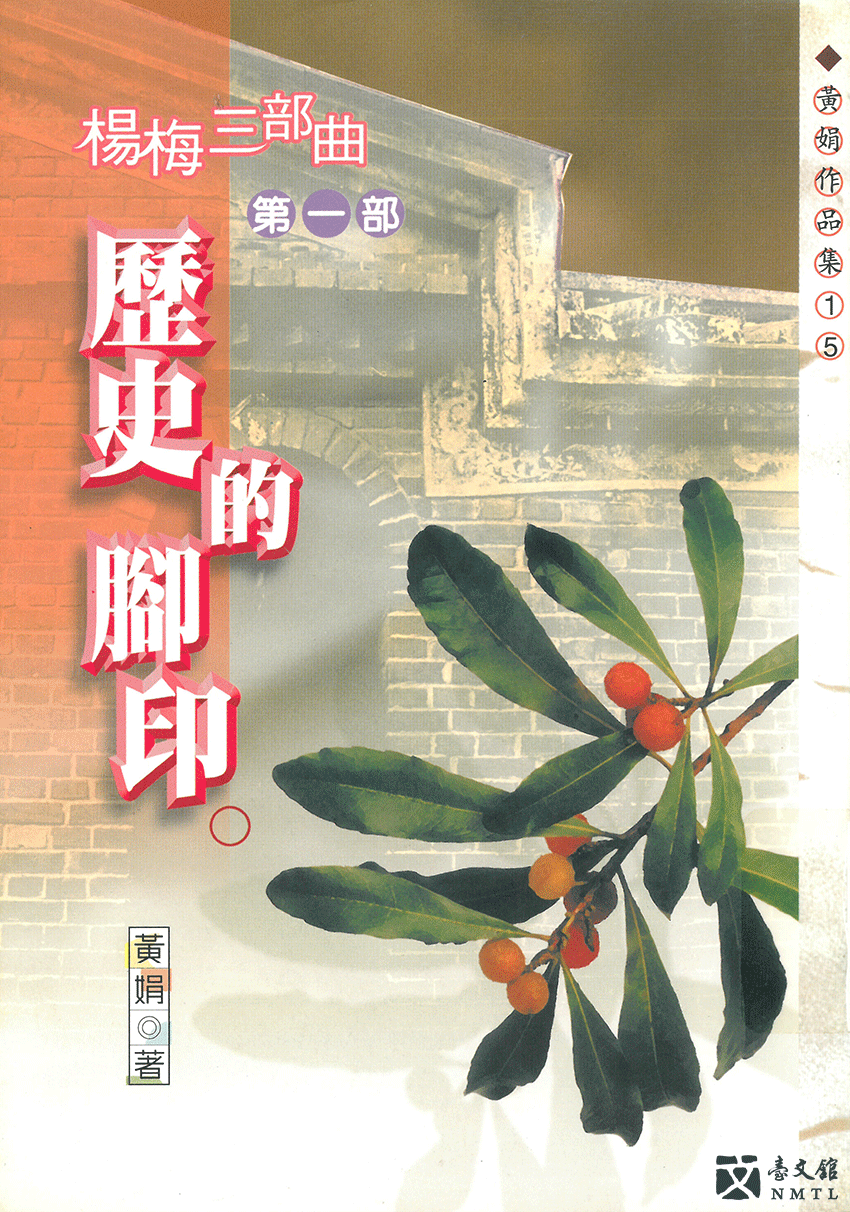
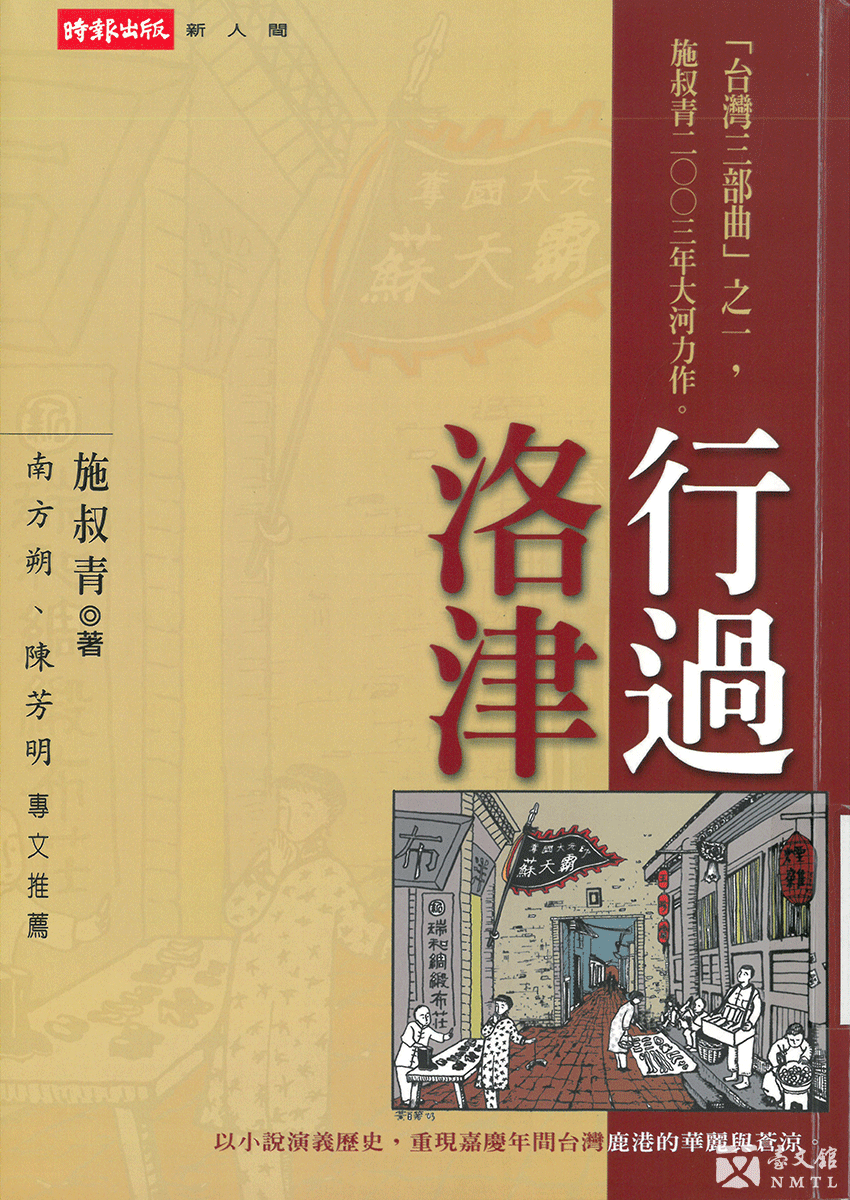
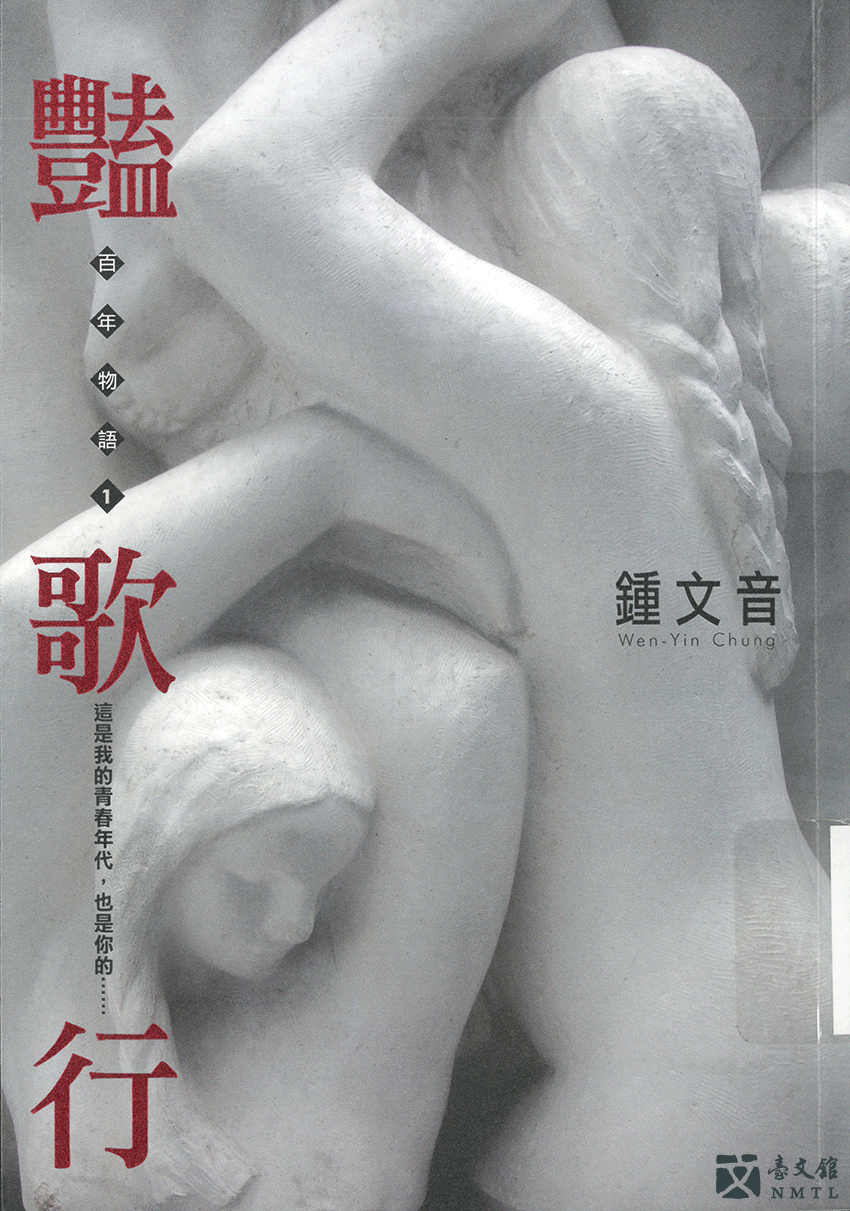
Q:Which novel is the Public Television series SEQALU, released in 2021, adapted from?
A:PUPPET FLOWER, by Chen Yao-chang.
Chen Yao-chang published TRILOGY OF THE FLOWER SERIES: HISTORY OF TAIWAN since 2016. These stories occurred in the Hengchun Peninsula, with the Rover Incident, Mudan Incident and the Shi-Tou Clan Event as the basis forming the indigenous inhabitants' perspective that was missing in the history of Taiwan.
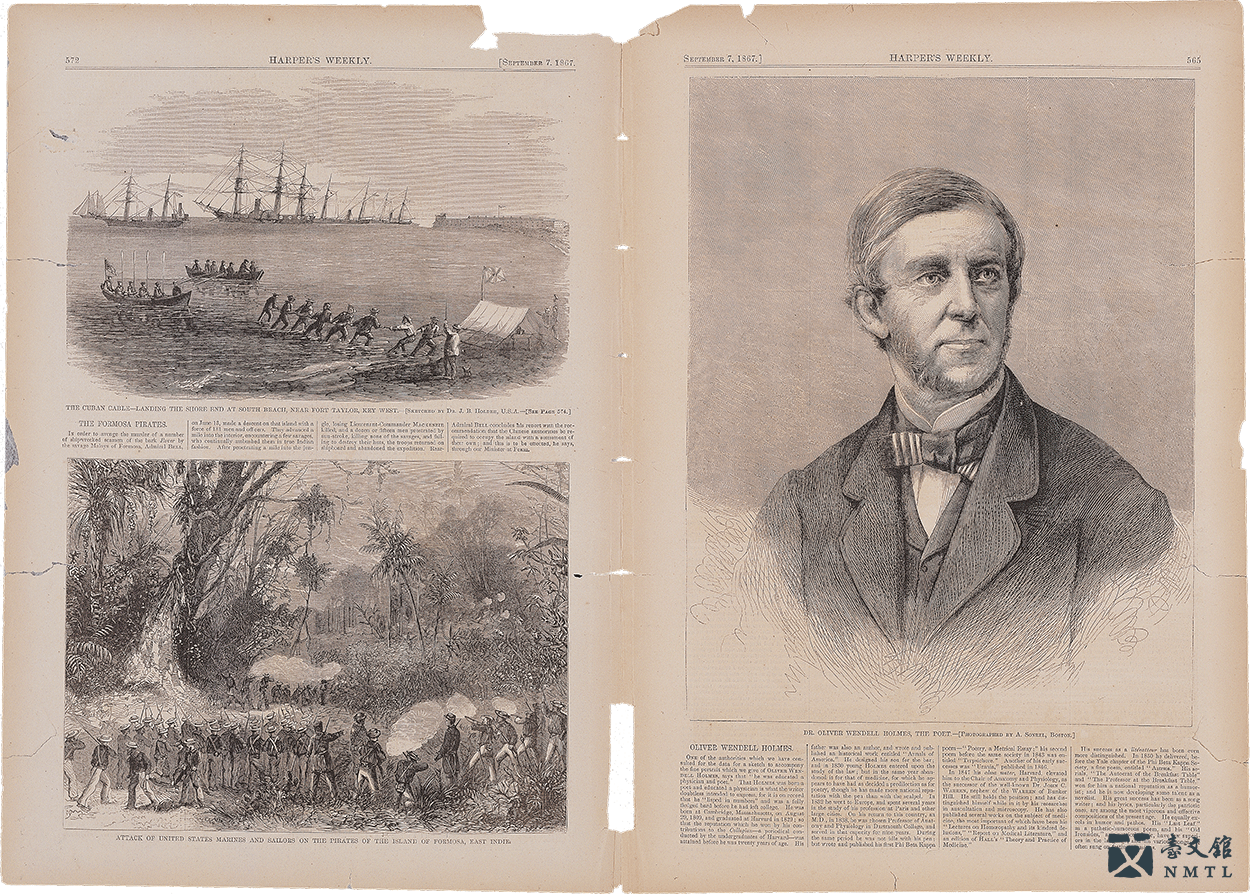
🌊 In 1867, the US's HARPER'S WEEKLY|It is reported the Rover Incident happened on March 13, 1867. (Provided by the National Museum of Taiwan History)








